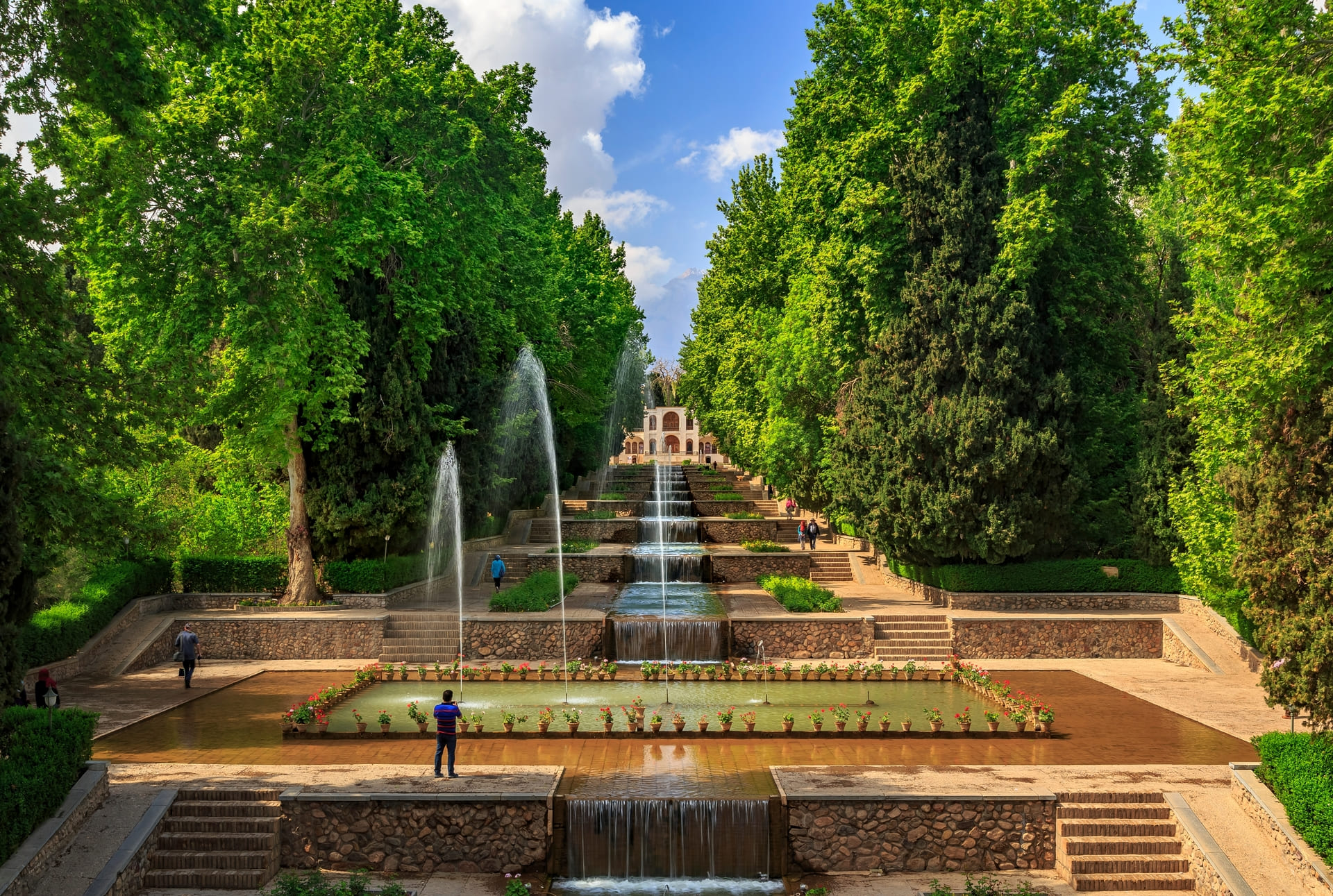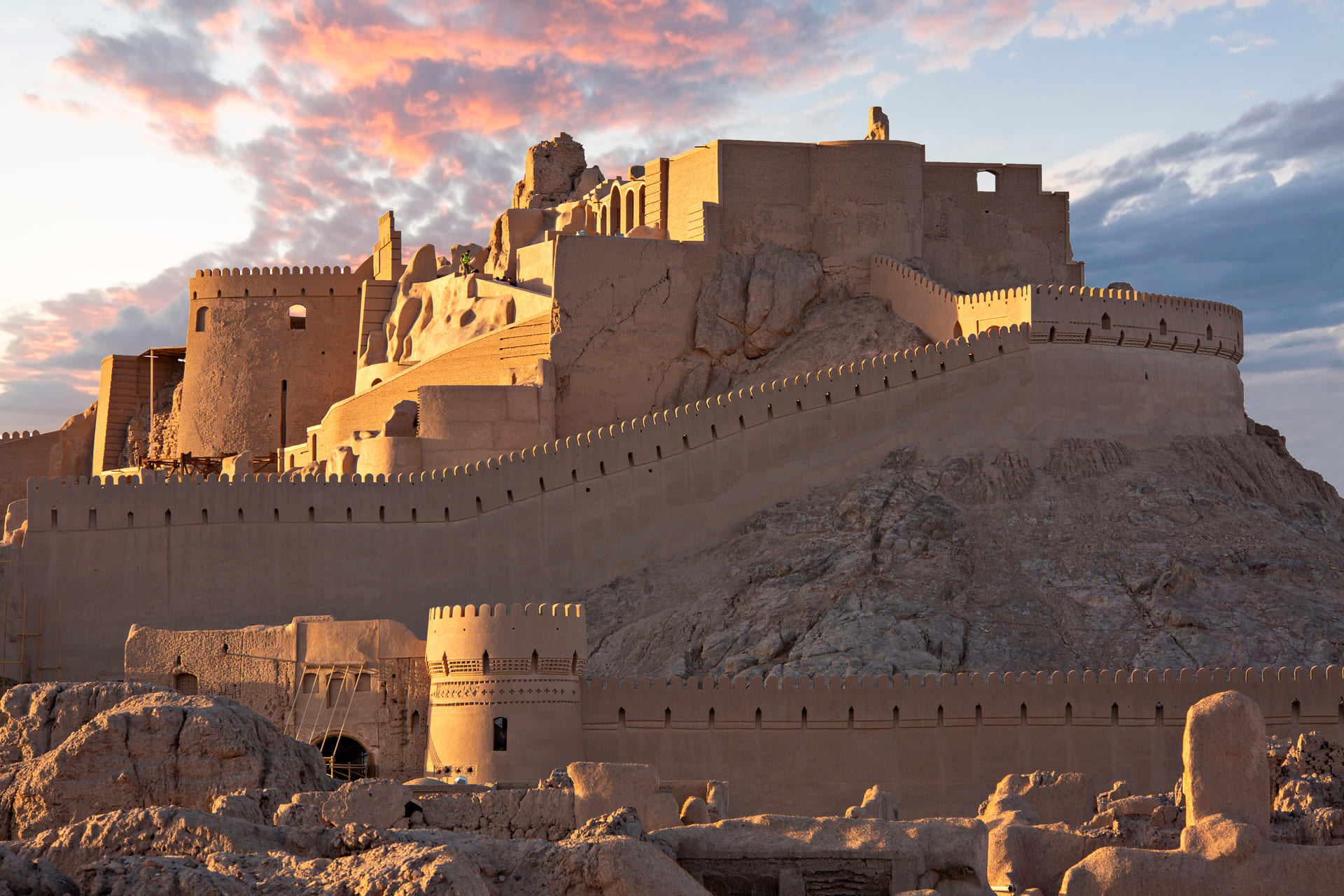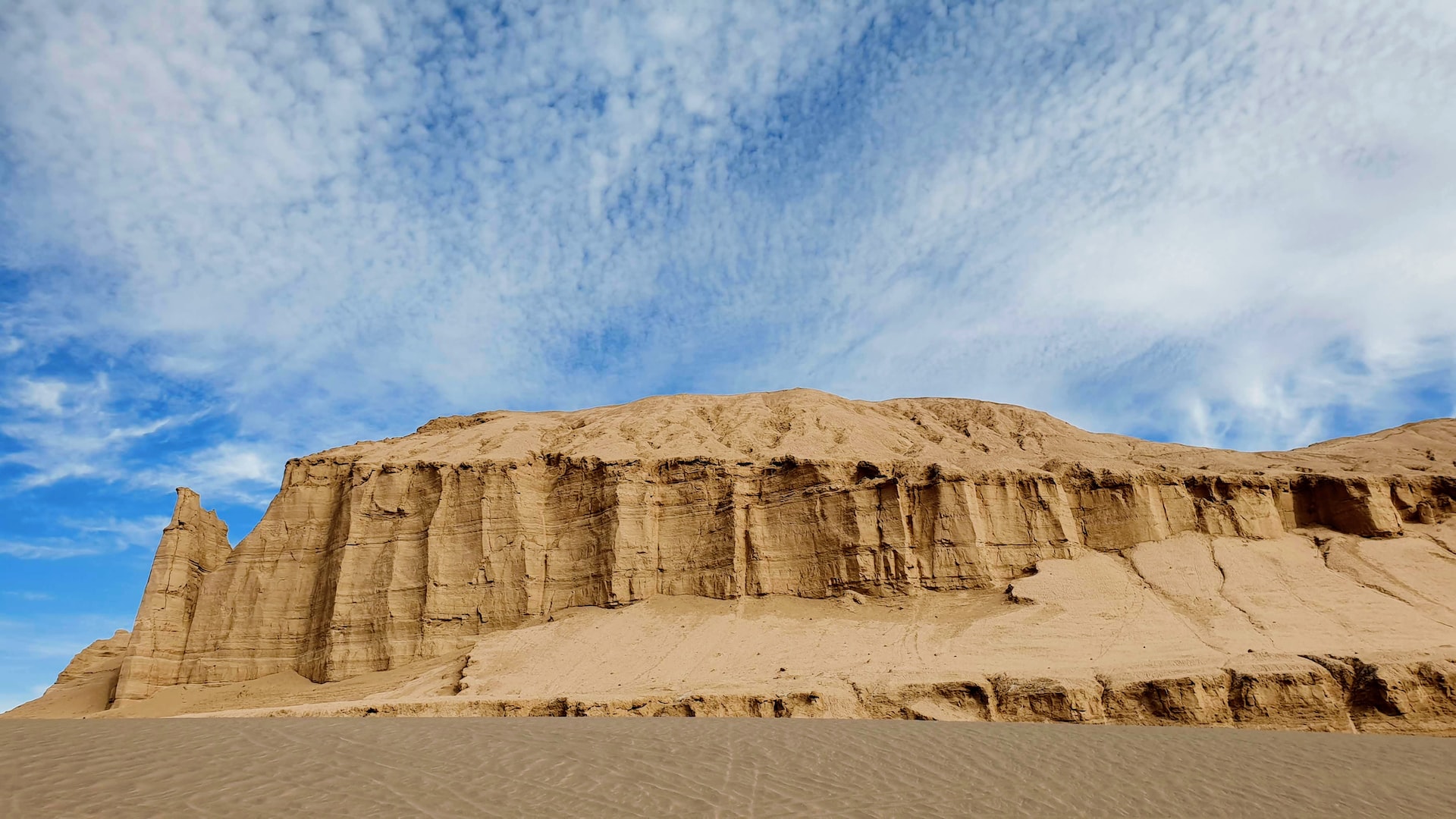



The story of Kerman begins deep in the annals of history, with its roots stretching back to the 4th century BCE. Originally known as Karmania, this ancient city served as a vital point on the trade routes of the Parthian and Sassanian empires. In those days, Kerman was a bustling hub of commerce and culture, surrounded by fertile lands and nurtured by the temperate climate of southeastern Iran.
Kerman’s prominence soared during the Sassanian era, thanks to its strategic location. The city became renowned for its thriving silk and cotton industries, producing fine textiles that were highly sought after across the region. This period marked Kerman as a significant center of commerce and craftsmanship, with caravans carrying its exquisite goods to distant markets.
In the early Islamic era, Kerman continued to flourish. By the 10th century, under the Buyid dynasty, Kerman had transformed into a vibrant city adorned with mosques, palaces, and bustling bazaars. The renowned geographer, Al-Muqaddasi, praised Kerman for its architectural beauty and prosperity. However, Kerman’s fortunes took a turn during the Mongol invasions of the 13th century. The city suffered considerable damage, yet its resilient spirit saw it rise again from the ashes.
Fast forward to the Safavid period, Kerman regained its former glory, becoming a major center for Persian carpet weaving. The city’s artisans produced carpets of such quality that they were sought after by nobility and royalty across Europe and Asia. The intricate designs and vibrant colors of Kerman’s carpets became synonymous with Persian artistry, a legacy that endures to this day.
The 18th century witnessed Kerman’s pivotal role in the rise of the Zand dynasty. Karim Khan Zand, the founder of the dynasty, recognized Kerman’s strategic importance and invested heavily in its infrastructure. The city’s old quarters, with their traditional baths, caravanserais, and bazaars, still echo the grandeur of this era.
Kerman’s cultural and historical significance continued into the Qajar period. The city became known for its educational institutions and was a hub for scholars and poets. Its libraries and schools attracted intellectuals from far and wide, contributing to Kerman’s reputation as a center of learning and culture.
Today, Kerman stands as a testament to centuries of resilience and cultural heritage. Its ancient citadels, such as the Arg-e Bam, and its rich architectural legacy, including the stunning Ganjali Khan Complex, offer a glimpse into the city’s storied past. Visitors to Kerman can explore its vibrant bazaars, marvel at the intricate tilework of its mosques, and experience the warmth of its traditional hospitality.
As you wander through the streets of modern Kerman, the echoes of its illustrious history resonate in every corner, inviting you to delve into the tales of a city that has weathered the storms of time with grace and grandeur. Are you ready to uncover the captivating history of Kerman?
Kerman History
Excited about exploring the wonders of Kerman? Well, timing is crucial when planning your trip to this fascinating city, known for its rich history, cultural heritage, and natural beauty. As many travelers include Kerman in their Iranian adventures, choosing the ideal time for your visit is essential.
Every season in Kerman has its unique appeal, offering memorable experiences year-round. Let me reveal a secret:
(Apr-Jun)
Spring in Kerman is truly enchanting. The weather is mild, and the landscape blooms with vibrant wildflowers. The famous Bagh-e Shahzadeh garden comes alive, offering a serene escape with its fountains, flowers, and fresh spring air.
(Jul-Sep)
In Kerman, summer’s warmth is paired with cool nights that are perfect for star-gazing in the desert. Daytime offers a chance to delve into the city’s rich history, while evenings are best for savoring traditional Persian cuisine.
(Oct-Dec)
Visit Kerman in autumn to witness a landscape painted with gold and amber. The pleasant temperatures make it ideal for exploring ancient ruins, bustling bazaars, and tasting traditional foods that reflect the richness of the season.
(Jan-Mar)
Kerman in winter is a hidden gem. The cool climate provides a refreshing change, perfect for exploring the city’s historic bazaar and relaxing in its quaint tea shops. Snow-topped peaks add a serene backdrop to the city’s charm.
Here’s a pro tip:
May brings a serene calmness to Kerman as the busy travel season winds down. You can explore the city’s historic sites and gardens at your leisure, soaking in the rich heritage without the crowds. For an ideal Kerman experience, mark your calendar for May and June – the best time for a tranquil and unforgettable journey. Ready to make memories in this desert oasis?
In Kerman, locals and visitors navigate the city using taxis, buses, and rideshares. As a tourist, you’ll find no need for a private car in Kerman, thanks to the efficient public transport options. However, for trips to the surrounding desert and villages, renting a private car is advisable.
In Kerman, buses are the primary public transportation method, extensively used by both locals and visitors. The bus service operates numerous routes, providing a thorough and affordable way to explore the city. While some areas may experience slower service, the comprehensive nature of the bus network makes it highly effective. Payments for fares can be made using rechargeable cards or cash, allowing easy and cost-effective access to Kerman’s significant sites and attractions.
Certainly, the primary and widely used public transportation choice in Kerman is the taxi. The extensive taxi service operates throughout the city, providing a convenient option for both residents and visitors. While they may be more expensive than buses, taxis offer door-to-door service and are available at all hours, making them a reliable choice. To access these services, you can hail a taxi on the street, call for one, or use local rideshare apps, with fares paid in cash or via app.
Kerman does not have a subway system, so public transportation is mainly reliant on buses and taxis. The city’s efficient bus network serves both residents and tourists, providing a cost-effective way to travel. While exploring Kerman, you’ll find buses covering key routes and attractions, making it easy to get around. The absence of a subway is offset by the accessibility and affordability of the bus system, ensuring you can reach important destinations without hassle.
In Kerman, online taxi services like Tapsi and Snapp have become popular for public transportation. These apps provide a convenient way to book rides, offering quick pick-up times and transparent pricing. Available for download on smartphones, they allow you to request a ride from anywhere in the city. Payments can be made in cash or through the app, ensuring flexibility and ease of use. For tourists and locals alike, Tapsi and Snapp simplify navigating Kerman.

Let the Experience Begin
Explore the charms of Kerman with our meticulously crafted tours, guiding you through historic landmarks, lush gardens, and the remarkable heritage of ancient Persia. Delve into the rich history, vibrant culture, and stunning landscapes of this intriguing city on a journey designed to match your preferences.
Kerman, a jewel of Iran, is more than a city; it’s a cultural treasure trove, celebrating history, art, and the legacy of its ancient heritage. Amidst the aroma of local cuisine and the marvel of stunning architecture, Kerman’s creative artisans craft exquisite souvenirs and intricate handicrafts. Explore the fascinating world of Kerman’s most treasured crafts and keepsakes.
Pistachio
Famous for their rich flavor and crunch, Kerman pistachios are a premium delicacy. These nuts are enjoyed raw, roasted, or salted, making them versatile for snacks or recipes. They are beautifully packaged, making them an excellent gift choice and a wonderful way to savor the agricultural pride of Kerman.
Kermani Cumin
Kermani Cumin is prized for its strong fragrance and robust flavor profile. Harvested in Kerman’s fertile lands, this spice is a key ingredient in Persian cooking. Whether ground or whole, Kermani Cumin adds depth and complexity to dishes like stews, rice pilafs, and grilled meats. Packaged for freshness, it’s a must-have for culinary enthusiasts and a perfect gift from the region.
Kolompeh (Kolumpeh)
Kolompeh (Kolumpeh) is a beloved pastry from Kerman, known for its buttery crust and sweet filling of dates, cardamom, and walnuts. Adorned with intricate patterns, these pastries are a symbol of Kerman’s culinary craftsmanship. Packaged beautifully, Kolompeh makes a delightful gift, offering a taste of traditional Kermani flavors.
Qottab
Qottab, a traditional pastry from Kerman, features a delicate dough filled with a sweet mixture of ground almonds, sugar, cardamom, and rosewater. These pastries are deep-fried until golden and then dusted with powdered sugar, offering a crunchy exterior and a rich, aromatic filling. Enjoyed with tea, Qottab exemplifies the culinary craftsmanship and cultural heritage of Kerman.
Bam’s Date
Discover Bam’s Dates, cherished for their sweetness and nourishing qualities. Grown in the region’s sun-drenched orchards, varieties like Medjool and Deglet Noor are known for their rich flavor and plump texture. Enjoy them as a healthy snack or incorporate them into recipes for a taste of Kerman’s agricultural heritage.
Pateh Weaving
Kerman’s Pateh weaving is an art form celebrated for its intricate designs and skilled craftsmanship. Artisans meticulously stitch wool threads onto cotton fabric, creating textiles that depict traditional Persian motifs. Pateh pieces serve as both decorative and cultural symbols, illustrating Kerman’s commitment to preserving its rich textile heritage through exquisite handmade creations.
Kerman’s Carpet
Kerman Carpets, crafted in the historic city of Kerman, Iran, are celebrated for their intricate designs and vibrant colors. These hand-woven masterpieces use high-quality wool and natural dyes, resulting in durable and beautiful pieces. The carpets often feature detailed floral patterns and medallions, showcasing the exquisite artistry and cultural significance of Kerman’s rich handicraft tradition.
Copper Dishes
Kerman, is renowned for its exquisite Copper Dishes, a cherished handicraft passed down through generations. Artisans skillfully hammer and engrave intricate designs onto copper plates, creating stunning pieces that blend functionality and beauty. These copper dishes, often used for serving or decorative purposes, reflect Kerman’s rich cultural heritage and meticulous craftsmanship, making them highly prized by collectors and enthusiasts worldwide.
Girih tiles
Girih tiles represent a significant aspect of Kerman’s esteemed handicraft tradition. These tiles feature elaborate geometric patterns, typical of Islamic decorative arts. The creation of Girih tiles involves precise craftsmanship, where artisans cut and arrange polygonal shapes into complex, repeating designs. Kerman’s skilled artisans continue to produce these tiles using age-old techniques, ensuring the preservation of this intricate art form. Girih tiles not only enhance architectural beauty but also reflect the rich cultural heritage of Kerman.
Khos Weaving
The art of Khos weaving in Kerman is a testament to the region’s rich cultural history. Using fine silk or cotton threads, artisans create elaborate patterns that reflect traditional Persian motifs. This handicraft has been preserved through generations, with each piece showcasing the meticulous skill and artistic vision of the weaver, making Khos weaving a significant cultural treasure of Kerman.
Rug
Kerman rugs stand out in the world of Persian carpets for their elegance and quality. Crafted by skilled weavers, these rugs feature detailed motifs and vibrant hues. The artistry involved in each piece showcases Kerman’s rich cultural heritage, making these rugs a prized possession for collectors and connoisseurs who appreciate the beauty of traditional handicrafts.
Satchels
In Kerman, the Satchel is more than just a bag; it’s a symbol of the region’s artisanal expertise. Crafted from premium leather, each satchel is a testament to the meticulous handwork of local artisans. Adorned with intricate designs, these satchels blend functionality with elegance, embodying the rich cultural heritage and artistic traditions of Kerman in every stitch.
Monabat Kari (fretwork on woods)
Kerman’s fretwork on wood is a celebrated traditional handicraft, where artisans expertly carve intricate designs into wood. This meticulous process transforms ordinary wooden items into extraordinary decorative pieces. The art of fretwork reflects Kerman’s deep-rooted cultural heritage and showcases the remarkable talent and dedication of its craftsmen, preserving this craft for future generations.
Galam Zani (Engraving on Silver)
Galam Zani, or engraving on silver, is a celebrated handicraft of Kerman, Iran, embodying the region’s rich cultural heritage. Artisans meticulously carve intricate designs onto silver objects, blending traditional Persian motifs with modern artistry. This delicate craft requires immense skill and patience, making each piece a unique masterpiece. Galam Zani showcases the vibrant artistry of Kerman, attracting art lovers and collectors worldwide.
Discover the charm of Kerman, a city where history and modernity blend seamlessly. Wander through historic sites, explore local handicrafts in bustling bazaars, and savor the rich tastes of Persian cuisine. Kerman greets you warmly, inviting you to experience its unique mix of age-old traditions and contemporary vibrancy. Whether you’re strolling through serene gardens or finding treasures in the city’s alleys, Kerman offers an enchanting journey for every traveler.
Kerman is a city rich in history and culture, renowned for its unique and flavorful cuisine. This city, with its deep cultural roots, offers a variety of traditional dishes that reflect its heritage. The array of Kerman’s local foods is extensive, so it’s worth learning about these culinary delights before visiting to ensure you taste your favorite dishes during your trip to this historic city.
As you explore Kerman’s cuisine, remember that spices play a crucial role in Iranian cooking. In Kerman, you’ll find dishes infused with local herbs and spices, creating complex and aromatic flavors. Staple ingredients often include rice, saffron, and a variety of nuts and fruits. Traditional cooking methods, passed down through generations, are still used to prepare these delectable dishes, preserving the authentic taste of Kerman
Experience the charm of Kerman, a city brimming with historical richness and cultural depth. From luxurious hotels to cozy guesthouses, Kerman offers accommodations that cater to every preference. Whether you seek opulent comfort or intimate charm, the city’s lodging options provide the perfect base for exploring its vibrant heritage. Let Kerman’s unique blend of tradition and hospitality enhance your visit, making your stay unforgettable.


From the stunning
Prepare for an enriching 3-day journey through captivating Kerman! We’ve crafted an ideal itinerary for you to uncover the region’s finest attractions. Whether you’re short on time or have days to explore, our flexible guide allows you to personalize your experience to suit your preferences. Immerse yourself in Kerman’s vibrant culture and storied history, ensuring a fulfilling stay in this remarkable corner of Iran. Embark on your exploration and uncover the treasures of Kerman’s diverse landscapes and heritage. Your adventure begins now!


